What to do if a peripheral device does not work with my Panasonic Laptop?
- MMichael KelleySep 23, 2025
Install the driver for the peripheral device. When or is displayed in the Device Manager, remove and insert the device.
What to do if a peripheral device does not work with my Panasonic Laptop?
Install the driver for the peripheral device. When or is displayed in the Device Manager, remove and insert the device.
Why is my Panasonic Laptop not detecting the access point?
If your Panasonic Laptop isn't detecting the access point, try shortening the distance between your computer and the access point, and then try the detection again. Also, confirm the following settings: ensure that Wireless LAN is enabled in the Advanced menu of the Setup Utility and that Wireless LAN of Wireless Configuration is set to Enabled. Confirm that Airplane mode is off and Wireless LAN (Wi-Fi) is ON. This computer uses channels 1 through 11 when using IEEE802.11b/g/n. Check the channel being used by the access point.
How to check the MAC address on a Panasonic CF-20 Laptop?
To check the MAC address of your Panasonic Laptop, follow these steps: First, right-click Start and select Windows PowerShell. Then, input "getmac /fo list /v" and press Enter (ensure there's a space between "fo" and "list", and between "list" and "/v"). For the Wireless LAN MAC address, note the 12-digit alphanumeric string displayed on the PhysicalAddress line of Wi-Fi. For the Wired LAN MAC address, note the 12-digit alphanumeric string displayed on the PhysicalAddress line of Ethernet. Finally, input "exit" and press Enter.
What to do if my Panasonic CF-20 Laptop cannot start up and the power indicator is off?
First, connect the AC adapter and ensure a fully charged battery is inserted. If that doesn't work, remove both the battery pack and AC adapter, then reconnect them. If the battery indicator remains off, the AC adapter protection might be active; disconnect the AC cord, wait at least three minutes, and reconnect it. Also, disconnect any devices connected to the USB port or disable [Tablet USB Port] or [Legacy USB Support] in the Setup Utility's Advanced menu. Finally, try pressing ?Fn? + ?F8? to turn off concealed mode.
How to fix no display on Panasonic CF-20?
If there is no display on your Panasonic Laptop, the external display may be selected. Press ?Fn?+ ?F3? or ? ?+ ?P? to switch the display and then click the display mode. When using an external display, check the cable connection, ensure the display is turned on, and verify the external display settings.
What to do if an error occurs while installing a driver on my Panasonic Laptop?
When you install a driver of card or peripheral device, make sure that the driver is compatible with the operating system.
Why can't I rotate the display on my Panasonic Laptop?
The application program currently running may not support image rotation. Quit the program, and then try to rotate the image.
How to enable SD Memory Card usage on Panasonic CF-20?
To enable SD Memory Card usage on your Panasonic Laptop, set [microSD Card Slot] to [Enabled] in the [Advanced] menu of the Setup Utility.
How to correct the date and time on my Panasonic CF-20?
To correct the date and time on your Panasonic Laptop: 1. Click (Start) - (Settings) - [Time & language] - [Date & time], and select [Off] in “Set time automatically”. 2. Click [Change], and then set the day and time. 3. Click [Change], and select [On] in “Set time automatically”.
Why can't my Panasonic CF-20 Laptop enter sleep or hibernation?
If your Panasonic Laptop cannot enter sleep or hibernation, try removing USB devices temporarily. If the problem persists, restart the computer. Note that it may take one or two minutes to enter sleep or hibernation, and the computer does not enter these modes immediately after resuming; wait approximately one minute.
Procedure for backing up flash memory data.
Procedure for restoring flash memory data from a backup.
Instructions for powering on the computer.
Instructions for shutting down the computer.
Details on the functions assigned to each tablet button.
Procedure for configuring tablet button functions.
Guidance on prolonging battery life and minimizing deterioration.
Recommended temperature range for battery charging.
Advice on optimal battery charging frequency.
Explanation of the battery status indicators.
How the computer behaves when the battery level is low.
Step-by-step guide to detach the tablet from the keyboard base.
Step-by-step guide to attach the tablet to the keyboard base.
Methods to reduce the computer's power consumption.
Procedure to set supervisor and user passwords in Setup Utility.
Procedure to set a Windows user sign-in password.
Methods to protect the computer from unauthorized access.
Enabling flash memory lock for data protection.
Procedure to access and start the Setup Utility.
Overview of the main configuration options in Setup Utility.
Settings related to CPU features like Hyper-Threading.
Configuration settings for various peripherals.
Settings for wireless communication (LAN, WAN, Bluetooth, GPS).
Setting the computer's boot mode.
Configuring the boot order for UEFI devices.
Enabling or disabling specific UEFI boot devices.
Information on using USB ports for charging devices.
Important precautions for using fingerprint authentication.
Explains the security benefits and limitations of fingerprint authentication.
Instructions for setting a password for device security.
Steps for the initial setup of fingerprint authentication.
Common issues and solutions related to computer startup.
Troubleshooting steps for various startup issues.
Resolving issues related to password entry.
Troubleshooting power state transitions.
List of hardware components that can be diagnosed.
Recommendations and notes for using the diagnostic utility.
Step-by-step guide to running the hardware diagnostic check.
Procedure to reinstall the operating system from recovery partition.
Procedure to erase flash memory data using a recovery disc.
Instructions for removing the built-in battery for disposal.
Key hardware and software specifications of the computer.
Procedure for backing up flash memory data.
Procedure for restoring flash memory data from a backup.
Instructions for powering on the computer.
Instructions for shutting down the computer.
Details on the functions assigned to each tablet button.
Procedure for configuring tablet button functions.
Guidance on prolonging battery life and minimizing deterioration.
Recommended temperature range for battery charging.
Advice on optimal battery charging frequency.
Explanation of the battery status indicators.
How the computer behaves when the battery level is low.
Step-by-step guide to detach the tablet from the keyboard base.
Step-by-step guide to attach the tablet to the keyboard base.
Methods to reduce the computer's power consumption.
Procedure to set supervisor and user passwords in Setup Utility.
Procedure to set a Windows user sign-in password.
Methods to protect the computer from unauthorized access.
Enabling flash memory lock for data protection.
Procedure to access and start the Setup Utility.
Overview of the main configuration options in Setup Utility.
Settings related to CPU features like Hyper-Threading.
Configuration settings for various peripherals.
Settings for wireless communication (LAN, WAN, Bluetooth, GPS).
Setting the computer's boot mode.
Configuring the boot order for UEFI devices.
Enabling or disabling specific UEFI boot devices.
Information on using USB ports for charging devices.
Important precautions for using fingerprint authentication.
Explains the security benefits and limitations of fingerprint authentication.
Instructions for setting a password for device security.
Steps for the initial setup of fingerprint authentication.
Common issues and solutions related to computer startup.
Troubleshooting steps for various startup issues.
Resolving issues related to password entry.
Troubleshooting power state transitions.
List of hardware components that can be diagnosed.
Recommendations and notes for using the diagnostic utility.
Step-by-step guide to running the hardware diagnostic check.
Procedure to reinstall the operating system from recovery partition.
Procedure to erase flash memory data using a recovery disc.
Instructions for removing the built-in battery for disposal.
Key hardware and software specifications of the computer.
| Operating System | Windows 10 Pro |
|---|---|
| Display | 10.1" WUXGA (1920 x 1200) |
| RAM | 16GB |
| Storage | Up to 512GB SSD |
| Durability | MIL-STD-810G |
| Device Type | 2-in-1 |
| Graphics | Intel HD Graphics |
| Wireless | Wi-Fi 802.11ac |
| Bluetooth | Bluetooth 4.2 |
| Ports | USB 3.0, HDMI, Ethernet |
| Dimensions | 275 x 211 x 24.5 mm (10.83 x 8.31 x 0.96 inches) |
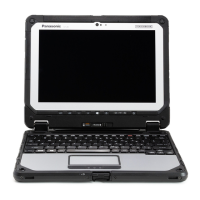
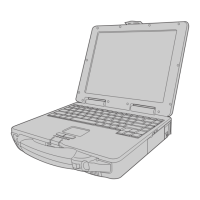

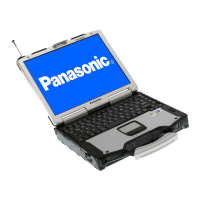

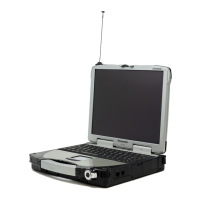



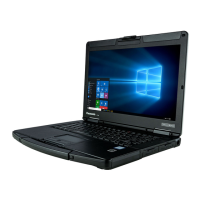
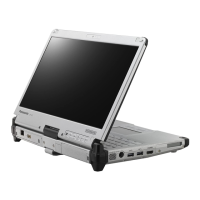
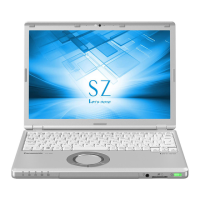
